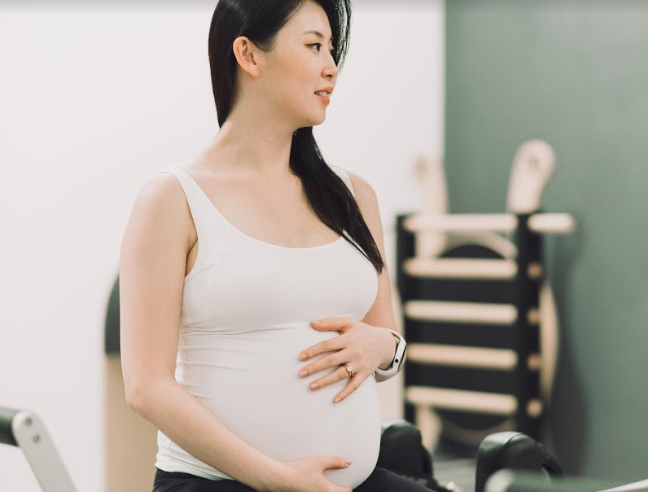What are some of the physical changes the body experiences during pregnancy?
There are numerous physical changes happening during pregnancy. These include the production of relaxin, a hormone that causes your ligaments and muscles to become more lax, resulting in unstable joints. In addition, the additional weight of the foetus changes the centre of gravity and can result in increased curvature of the spine, altered posture and maladaptive muscle patterns. These changes can predispose pregnant women to neck and back pain.
How does Pilates help?
Pilates helps to manage these symptoms by strengthening the deep core muscles, hamstrings and deep gluteal muscles to provide muscular support. Having good muscular support will reduce the stress on the joints, resulting in less maladaptive muscle patterns, thereby helping to reduce or even completely eliminate pain. Stretching and mobilization exercises done in Pilates to release the overactive muscles will also help reduce soreness and discomfort.
In addition, pelvic floor exercises, which are an important component of Pilates, will help reduce the additional pressure from the foetus on the pelvic floor. This will in turn reduce the occurrence of pre- and post-natal urinary incontinence.
A developed pelvic floor and deep core control will also help during labour. Plus, strong muscles have a good blood supply which will also help to speed up post-delivery healing.
Another common condition that occurs in pregnancy is diastasis recti, which is the separation of the rectus abdominus (the six-pack muscle). This is due to excessive exertion of tummy muscles that are stretched during the natural course of pregnancy. In Pilates, the focus is on using the deep core muscles, which help to act as a corset to support the abdomen during pregnancy, thereby decreasing the risk of diastasis during and after pregnancy.
Studies have also shown that exercise during pregnancy promotes the release of hormones that reduce the risk of pregnancy complications, and help combat pregnancy related depression by improving body image and increasing self esteem.
Realising that you will soon be bringing a new life to this world can be both wonderful and terrifying at the same time. With the help of Pilates, your journey into the next phase of life will be made easier.
 WHATSAPP
WHATSAPP





